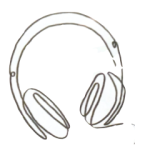The pandemic has sped a few things up in society and life (cash-less society for example) and slowed a few things down, and stopped a few things totally in their tracks.
Radio is measured by Rajar and since at its fundamental core it requires a doorstep visit, research stopped in March 2020. Finding a way around the obstacle is very difficult and no matter what you do, it will change the end result in some way. Any change or tweak in any methodology of research will impact the outcome of that research, no matter what it is.
Ratings 101. How is radio listening measured in the UK?
Rajar is, I think, one of the most complex audience research projects in Europe. Think about it for a minute- all radio stations in Rajar have a TSA (Transmission Survey Area) in which sampling takes place and they are based on postcode. Stations choose their own size and shape* of TSA which overlap each other. Some stations report results on a rolling 12 month survey, some on a rolling 6 month and some on 3 months**. All those stations need a workable sample size to make sure their results are correct and not just a finger in the air guess. Even with nothing else to make it more complicated (and there is much more), thats quite a tough ask!
*London TSA is a defined TSA for the Greater London area.
** Rolling 3, 6 and 12 month explained. Stations report every 3 months, just imagine a 6 month (or 12 month) moving window, adding a new 3 months on, and lopping off the earlier 3 months- eg Jan-June, then March to Sept etc etc.
Radio listening is measured by a self completion “Radio Diary”- whether a physical hard copy paper diary or increasingly an online or app based diary. The respondent completes the diary for a week, marking when they listened and to what station for any period longer than five minutes. You might be thinking that this is a rather “analogue” way of measuring something and you would be right. The reality is that because of the above reasons, and many more, its the solution which provides the closest best fit compromise of all the issues you are trying to solve. The doorstep visit recruits the candidate, goes through a series of identifying and qualifying questions and some background, explains the diary completion etc and so is pretty significant. It also identifies which stations the respondent listens to on any given week.

It that all seems a pretty basic system, well I understand your thought process and how you ended up with a feeling “They do what?”. It’s important to realise that a fair few mammoth brains have tried to better the system and update the processes over the years. I should also mention that not everywhere has the same methodology around the world– some places take a “market measurement” approach. With this method a defined “market” is measured, so areas are defined by locations, cities and towns etc and stations that have coverage within those towns are measured. Issue here is that if your transmitter location means that you either don’t cover all of the patch that is measured then your result would be lower, or you might cover a wider area and so you are not measuring your full potential. As I’ve said above London has a defined market- this is for a number of legacy reasons and the volume of stations in the market make this arguably the best approach.
In the US and a few other areas of the world a more electronic measurement is applied. On the face of it this is a less manual approach and therefore surely more reliable? The measurement meter “hears” a piggy back fingerprinted signal broadcast inaudibly with the station output- great! Although if you listen on headphone you have to plug the meter into the chain so measure the listening and if you leave the meter in the room with the radio but you left the room it is reporting listening that didn’t take place. the cost of doing all this is also higher than the current UK system too- Rajar looked at it a few years ago in fact and again its in detail on the Rajar website. There is not a silver bullet. Undoubtedly a more technological solution in the world of AI has to be part of the solution you would have to think, but there’s not a simple clean solution.

Radio has a basic issue. It’s HUGE and been around so long now, built into so many things and generally ubiquitous- so how you define and build a measurement to see how many people are listening at any given time is always going to be a compromise to get the closest, best result. How many people are listening and for how long seems like such a simple question on the face of it. The reality of exploring that question is far more complex. Radio can move from background listening to foreground, depending on activity and content and so how might you factor that into the equation of measurement? With a background listen is the subject listening or just hearing? You can really see how we end up with where we are- after all radio measurement is about listening by humans- recognising what they heard and and so there is some acknowledgment within that premise of awareness of listening or more “active listening” rather than a passive background music track. This is something Rajar point out on their website.
“The RAJAR listening survey has the advantage of not being reliant on specific hardware, and as the methodology is based on an adult’s active recording of what goes into the ears, this approach has been impervious to the development of new listening devices and delivery platforms, continuing to measure listening without disruption.”
Rajar website- Background
I’m sure anyone involved in any stream or online audio content is currently screaming something to do with stream numbers and using that. Of course! Surely that is the solution and answer? I would say it is absolutely a valid part of the measurement of the medium and demonstrates a lot of things- and in a current era without Rajar active measurement in the field- it is something to demonstrate some tangible, active listening and interaction from a listener without a shadow of a doubt. It’s not the silver bullet though as you are measuring the number of streams connected, but you don’t know what happened at the other end where the listener is- you know, that important bit! Were they in the room listening? Was the audio at a level audible to the human ear or low background level? Did this bit of “connected listening” replace a bit of unconnected non digital listening or append to it? Don’t get me wrong, it is part of the make up and fabric of the toolbox we have for demonstrating the health and audience of radio and audio but alone it isn’t the silver bullet to replace what we currently have.
In conclusion, measuring radio listening is a tough nut to crack. All alternatives have merit in some part. The current system has some strong credible and core benefits- unfortunately not easily overcome with a global pandemic limiting person to person meetings- adding another reason for media to long for that vaccine! Whilst more pandemic safe solutions are possible and can measure “something”, they might not deliver the kind of robust result we are used to, or would want to continue once the pandemic is behind us. That said the indications from the levels of uptake online and streaming during the “new normal” show that radio is in rude health. As I have already said in a previous blog, the things which make radio work and succeed are just as relevant now as they have ever been.
The current situation though has probably helped speed up the thought process on how to evolve how we try and answer the simple question of who is listening and how many of them are there.
Get new posts delivered straight to your inbox… just fill in the box below.

Want to get me working with you on your projects? Here are a few things I could help you with:
- Coaching talent on performance. Remote or in person.
- Analysis of markets and performance.
- Leading training sessions- remote or in person.
- Editorial advice and guidance.
- Bespoke presentations or sessions.
- Programming development and management.
Click the links at the bottom and let’s start to have fun.
I’m always interested in ideas for blog posts- feel free to suggest a topic below. You can include your contact info and I’ll give you credit for the suggestion if you wish.


One thought on “Who’s listening?”